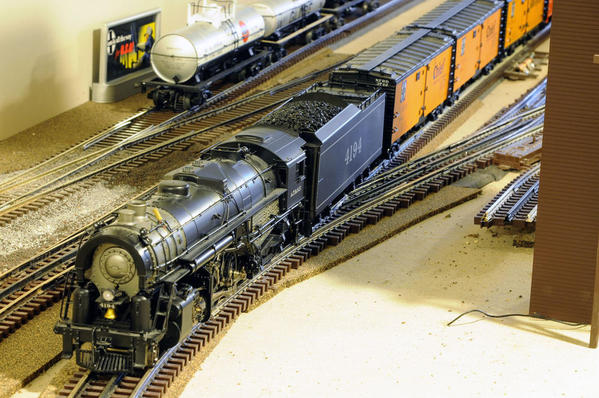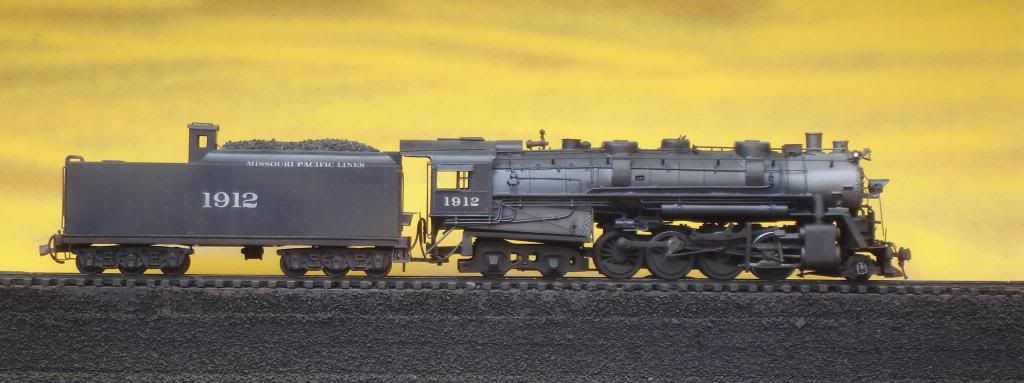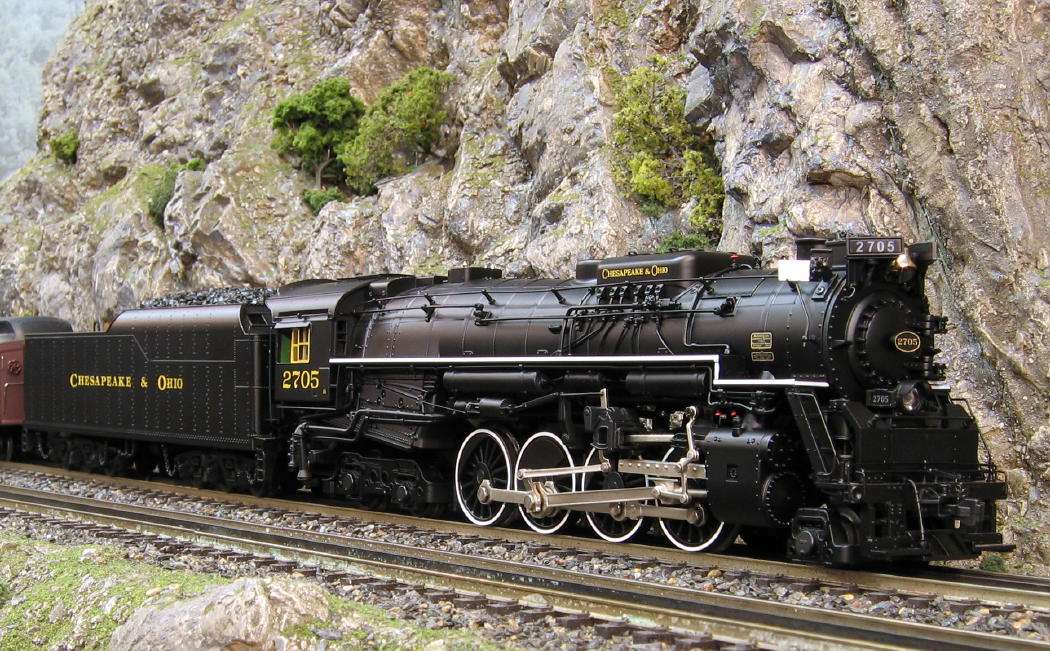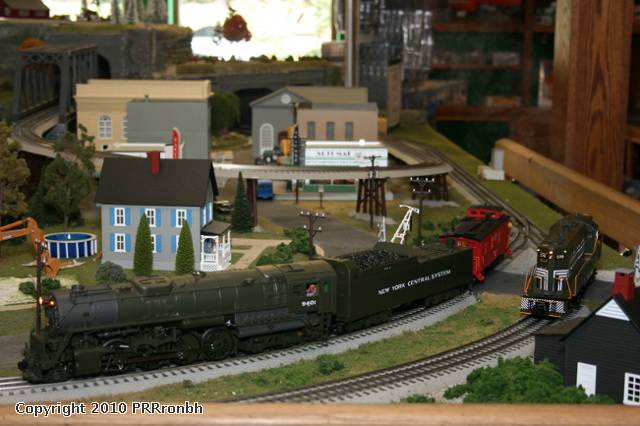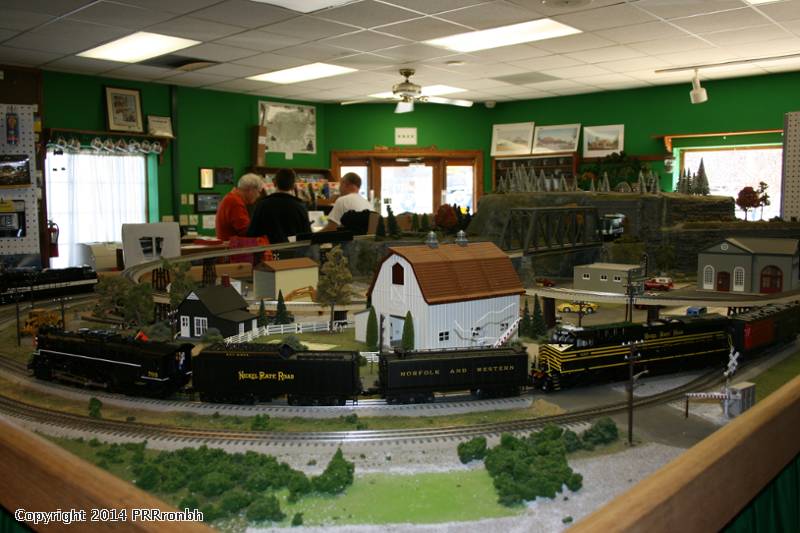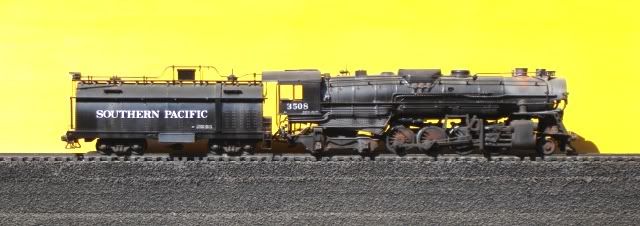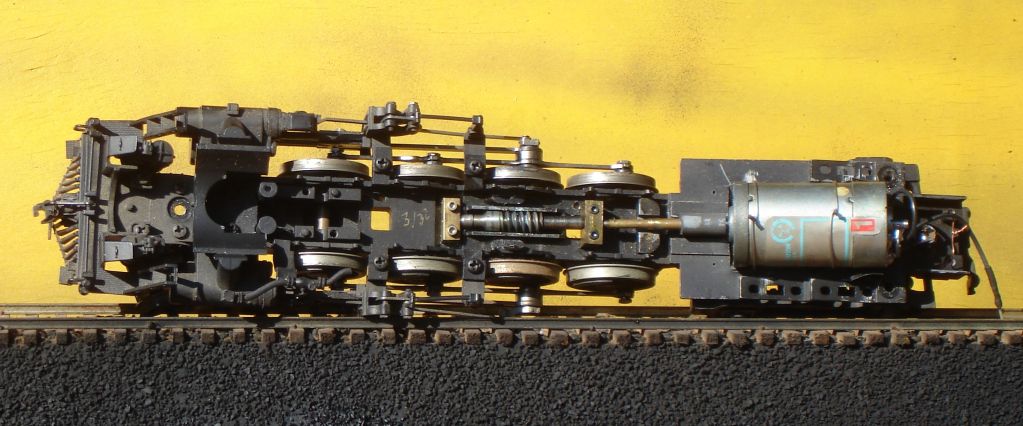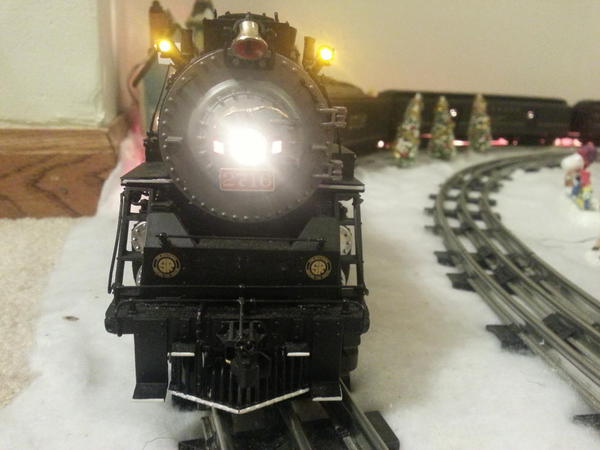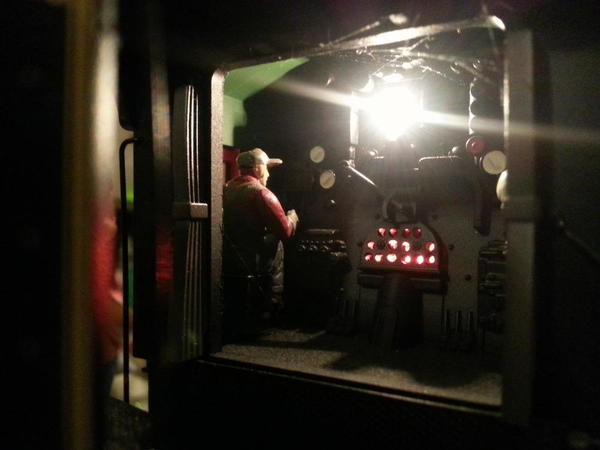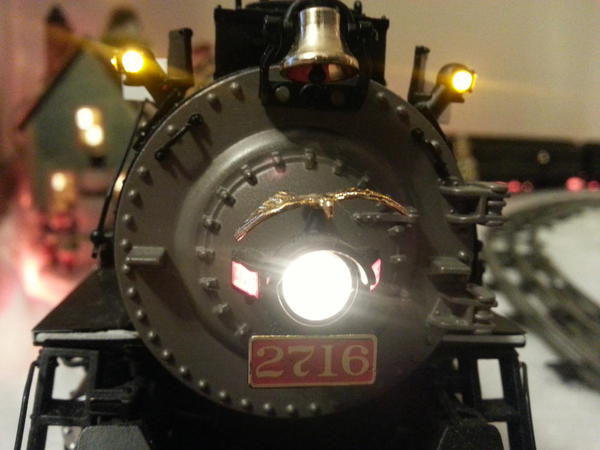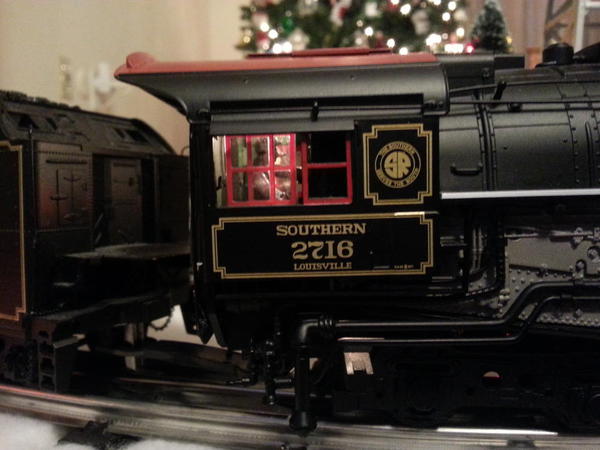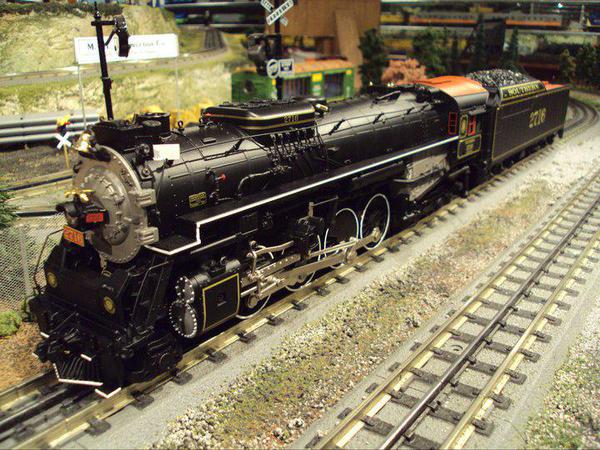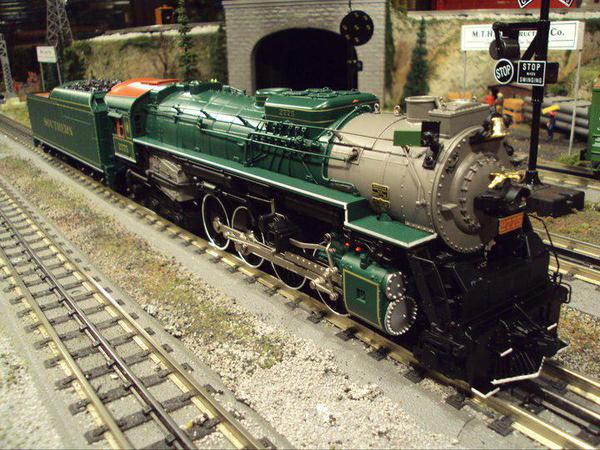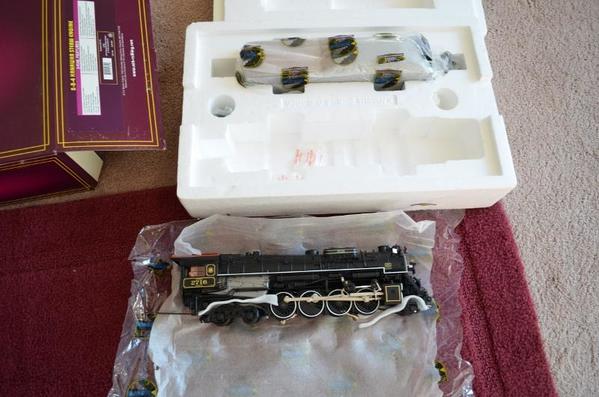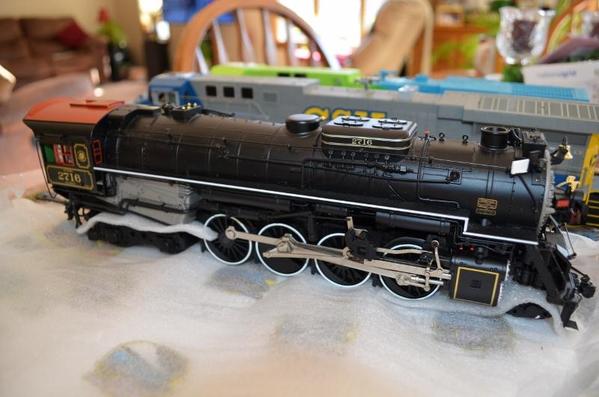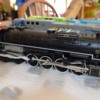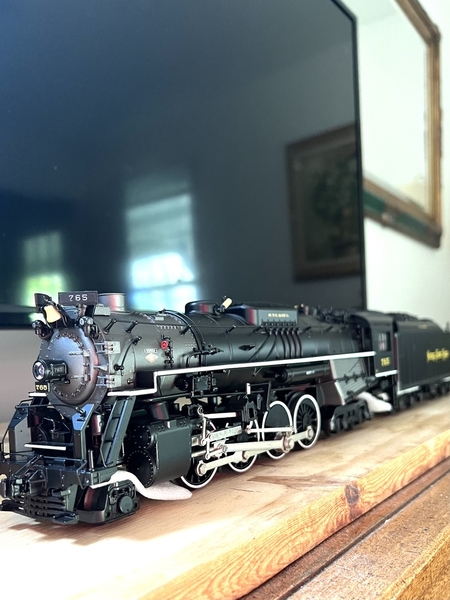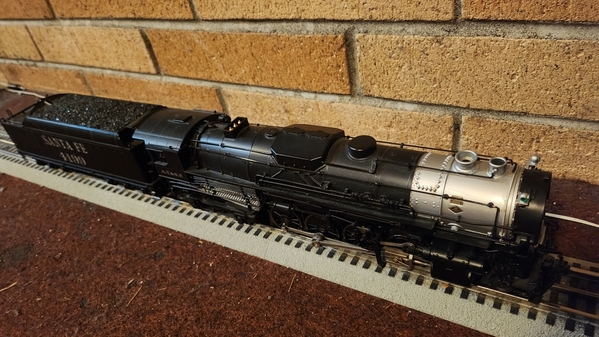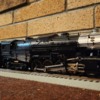The 2-8-4 Berkshire type locomotive is an icon for fans of modern steam locomotives. The wheel arrangement made its debut in the mid 1920s and the last were built in 1949. A total of 611 Berkshire type locomotives were built in North America and most Berkshires were built to one of just three designs. Models of each of those three plus one unique class of Berkshire are available today in O scale.
The original Lima Berkshires
In an era in which many new locomotive designs came from the ideas of a railroad mechanical department the Berkshire type locomotive originated with the Lima Locomotive Works. The first locomotive took shape in steel as a factory owned demonstrator to show railroads what Lima's super power concepts could do for them.
The original Lima 2-8-4 was built in 1924 and numbered A-1. It was an effort by Lima to continue the development they had done with the 2-8-2 Mikado type. The Lima built H-10 class Mikes of the New York Central System had demonstrated superiority over earlier locomotives of the same wheel arrangement by producing more peak horsepower and doing so with greater overall fuel economy. They did this through the use of a large fire box as well as other refinements. The fire box on the H-10 was near the limits of what could be supported by a single axle trailing truck. Lima provided the A-1 with 100 square feet of grate area and a two axle trailing truck to support the huge fire box. The A-1 retained the 63 inch diameter drive wheels of a typical Mikado and it was equipped with a booster engine for starting and low speed heavy hauling. The combination of a powerful boiler, booster engine and medium sized drivers made the A-1 a versatile locomotive that could handle substantial tonnage on grades and make good time with fast freights on the flatter portions of a railroad.
Among Lima's first customers for locomotives based on the A-1 design were the Boston & Albany of the New York Central System and their competitor the Boston and Maine. The new engines worked on the grades of the Berkshire hills, the geographical feature that provided the popular name for the wheel arrangement. The Illinois Central also ordered 50 Berkshire locomotives from Lima and purchased the A-1 itself. All together Lima built over 150 locomotives to their original design between 1926 and 1930.
K-Line produced models of the A-1 type Berkshire in both two rail and 3 rail O scale. Both conventional and TMCC equipped versions were manufactured. Lionel offered three rail models produced from the K-Line tooling in the 2013 Signature edition catalog. The latest Lionel Berkshires come with Legacy electronics and were cataloged in seven road names. The road numbers and 2013 catalog numbers are listed with their respective catalog illustrations.
Lima A-1, 6-11390

Boston & Albany 1404, 6-11389

Boston & Maine 4018, 6-11386

Illinois Central 7020, 6-11391

Michigan Central 1420, 6-11392

By 1945 the B&M had received twelve A-B-B-A sets of General Motors FT locomotives. The new Diesel road freight units made some of the Lima Berks surplus to the B&Ms needs. With the war effort swinging to the Pacific there was a great need for motive power on western railroads. Seven B&M berks went to the Santa Fe in 1945. Lionel has represented them with AT&SF 4199 cataloged as 6-11387.

Ten went to the Southern Pacific as represented by SP 3505, cataloged in 2013 as the 6-11388.

The ERIE Berkshires
In the late 1920s the Erie considered its market position and decided that it needed new locomotives with a combination of power and speed to compete for fast freight in the New York-Chicago corridor. While the Lima Berkshires had many advanced features the Erie wanted a locomotive with even greater capabilities. Erie designed a locomotive that took advantage of the Erie's broad clearances with a larger diameter boiler and 70 inch drivers. Alco, Baldwin and Lima all supplied Berkshires built to the Erie design between 1927 and 1929.
Sunset is now offering models of the Erie S-3 and S-4 Berkshires in 2 and 3 rail.
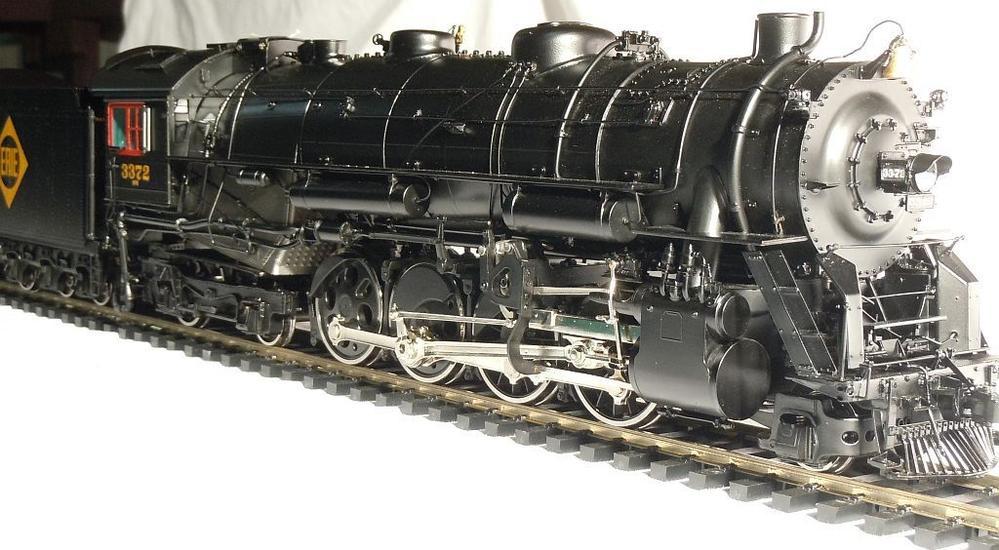
Advisory Mechanical Committee Berkshires
At the time the Erie developed their bigger, faster Berkshires the railroad was owned by the Van Sweringen brothers. The Van Sweringens also controlled the Chesapeake & Ohio, the Pere Marquette and the Nickle Plate Road. The four railroads formed a group called the Advisory Mechanical Committee to oversee locomotive engineering. In 1930 the C&O had a need for a locomotive with a combination of tractive effort and speed and tested an Erie Berkshire. While its performance was impressive the C&O decided that a ten coupled locomotive was needed and used the Erie locomotive as the starting point for a 2-10-4 design with 69 inch drivers. When the Nickle Plate needed a new locomotive for fast freight service in 1934 the C&O 2-10-4 was used as the basis for the new 2-8-4 design. The AMC Berkshires featured 69 inch drivers The grate area was 90 square feet, ten less than the original Lima or Erie designs. The AMC Berks also have slightly shorter tube length than their predecessors but they were the first Berkshires to have a combustion chamber. The result was a wonderfully balanced design with the versatility to perform well hauling fast freight, heavy tonnage and even in some passenger services.
The AMC Berkshire became one of the most important locomotive designs of the Super Power era. After the original NPK locomotives had proven highly successful the Pere Marquette ordered their first AMC Berkshires in 1937. The NKP, PM and C&O all ordered more AMC Berkshires during World War II. Other railroads also ordered locomotives built to the AMC design including the Richmond, Fredericksburg & Potomac, Virginian and Wheeling & Lake Erie. The last commercially built steam locomotive in the USA was NKP 779, constructed by Lima in 1949. The power and speed capabilities of AMC Berkshires have made them a popular choice for mainline passenger excursions in the Diesel era with PM 1225 and NKP 765 remaining active today.
Lionel AMC Berkshires
Lionel makes an AMC Berkshire model with dome placement to accurately model Pere Marquette and Nickle Plate Berks. They were first cataloged in 2003-2004 and have reappeared in 2010 and 2014.
PM 1225, 6-38052 2003 Volume I
PM 1225, 6-11146 2008 Volume I
PM 1225, 6-11203 2010 Volume I
PM 1225, 6-11455 2014 signature
PM 1227, 6-11456 2014 Signature
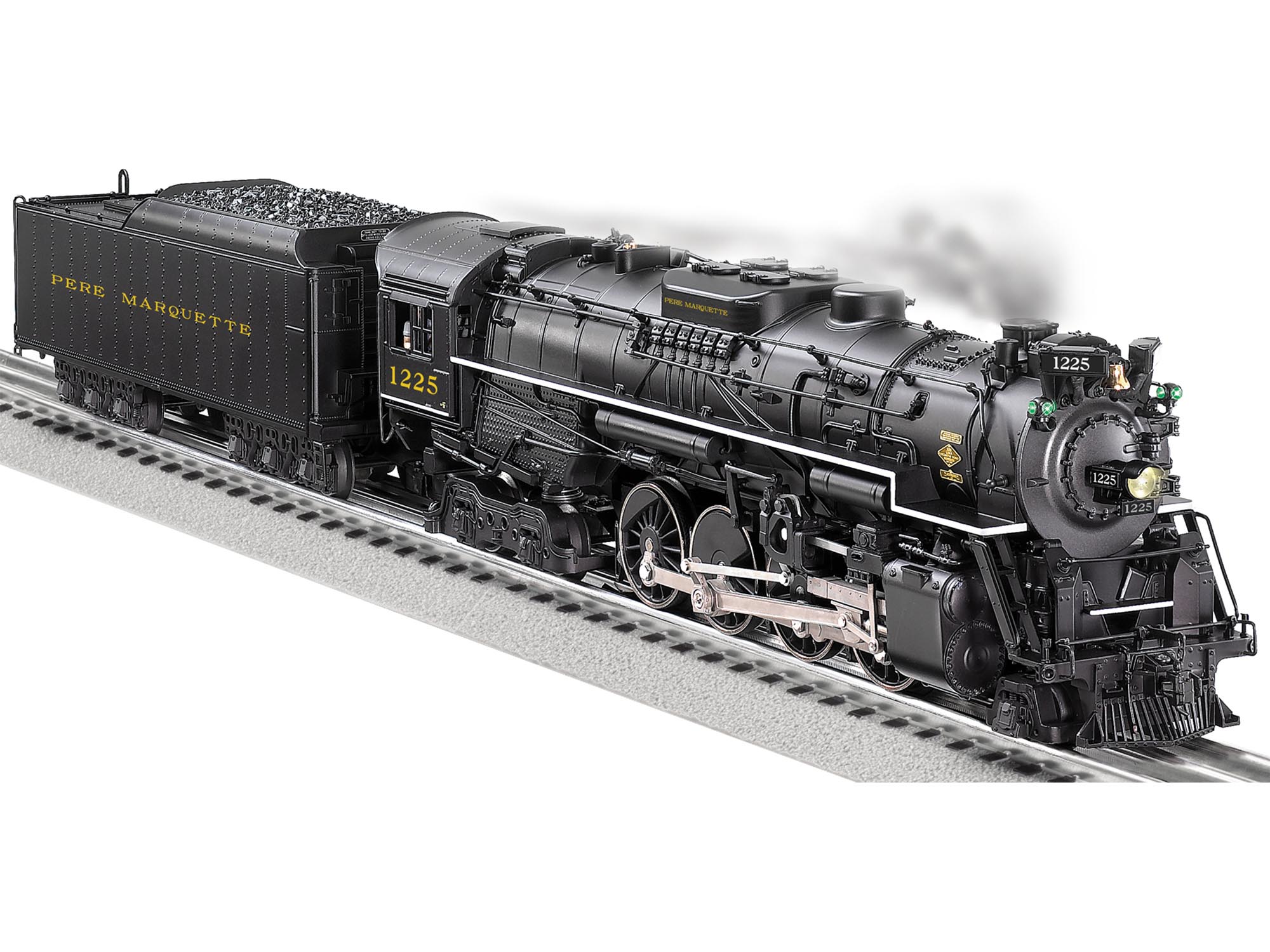
After the PM was folded into the C&O in 1947 the first fifteen PM Berks were relettered for the C&O and renumbered 2685-2699. Lionel has offered models of the PM Berks in C&O livery. They are distinguished from the 2-8-4s purchased by the C&O by their PM style boiler tube pilots, center mounted head lights and forward steam domes. They have been offered with two different styles of tender lettering.
C&O 2699, 6-38076 2004 Volume 2
C&O 2696, 6-11129 included in the 6-30066 set from the 2009 Signature catalog
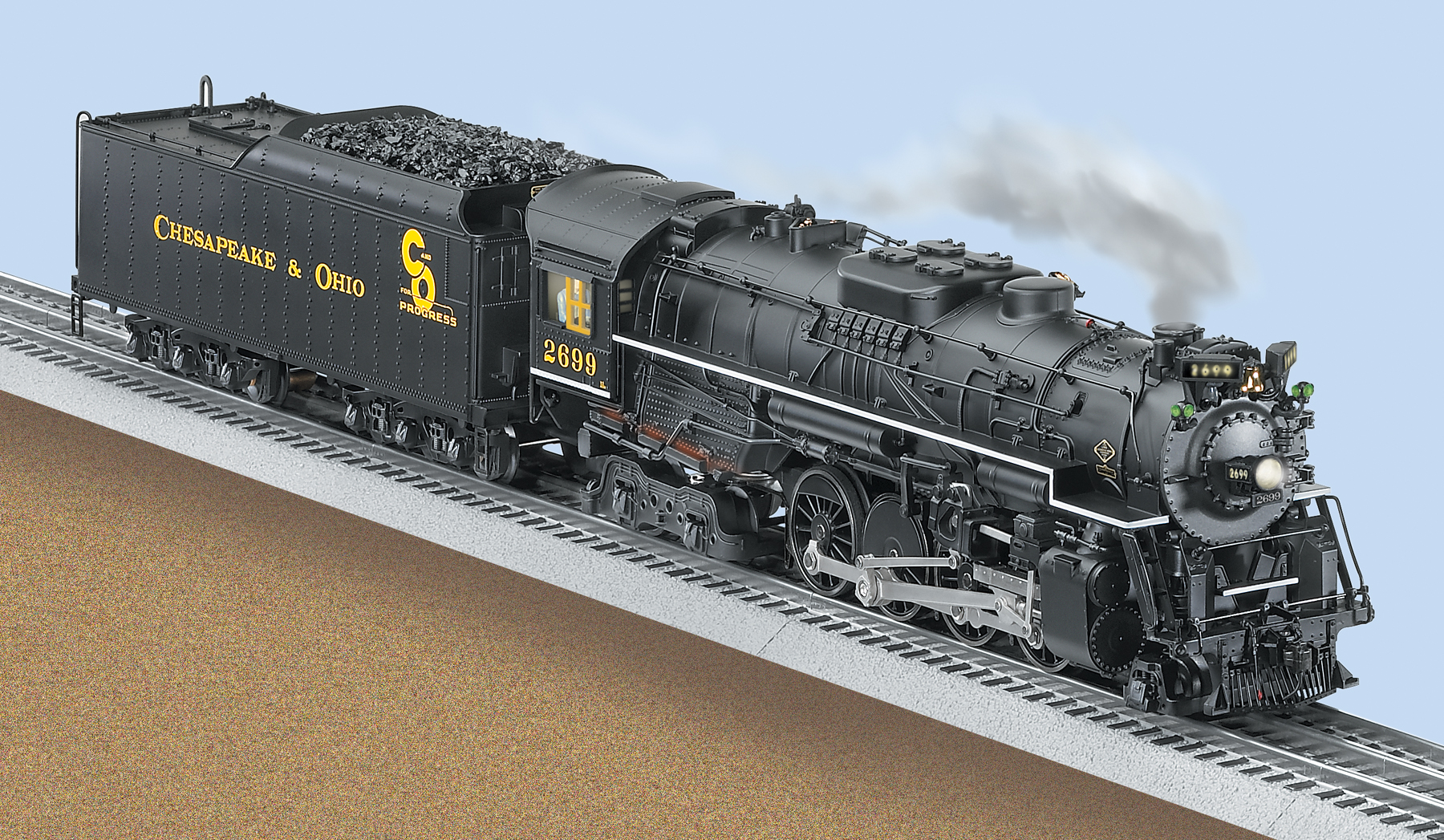
C&O 2687, 6-11452 2014 Signature catalog
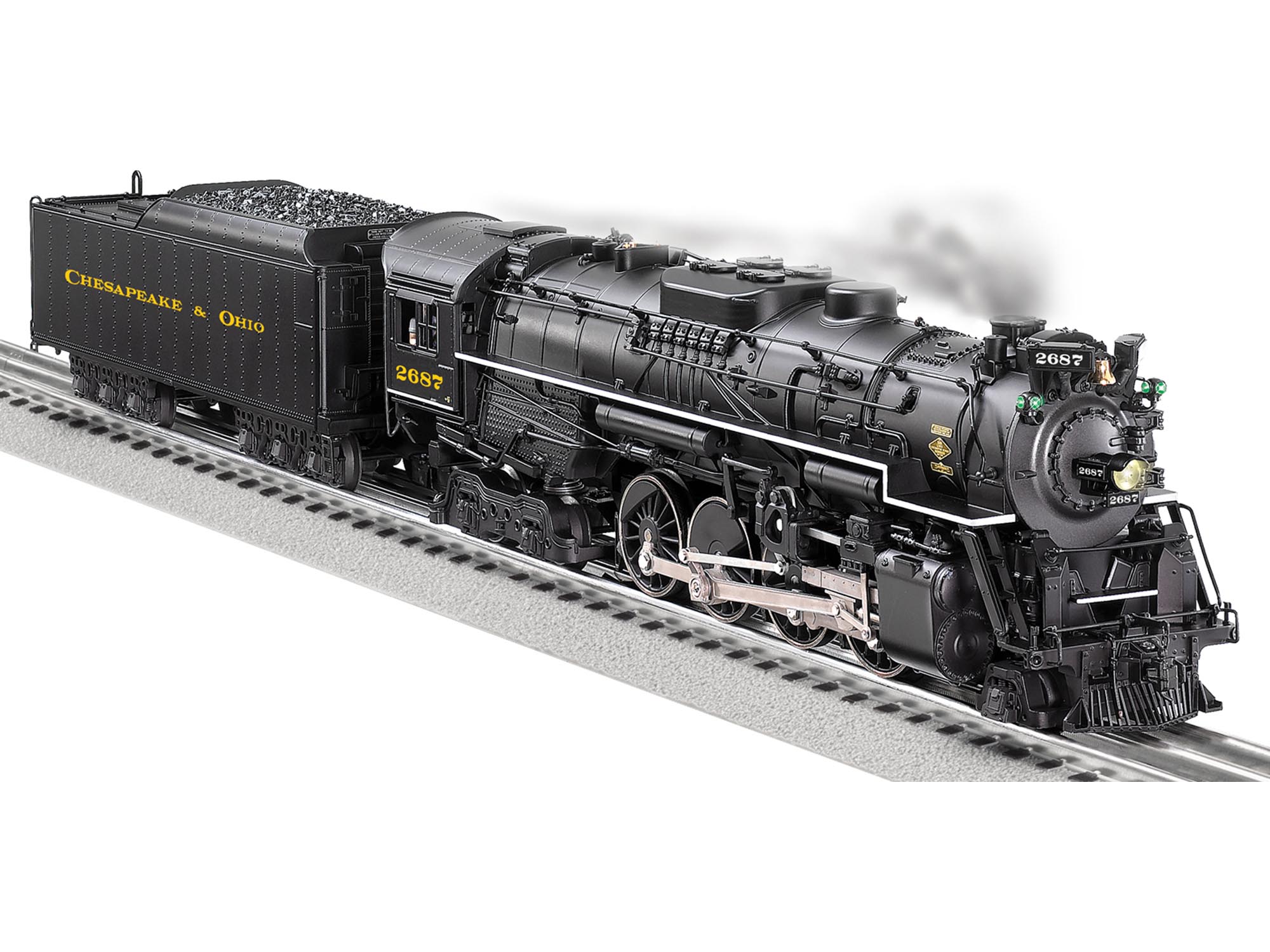
Nickle Plate
NKP 779, 6-38050 2003 Volume II
NKP 765, 6-11212 2010 Signature
NKP 765, 6-11454 2014 Signature
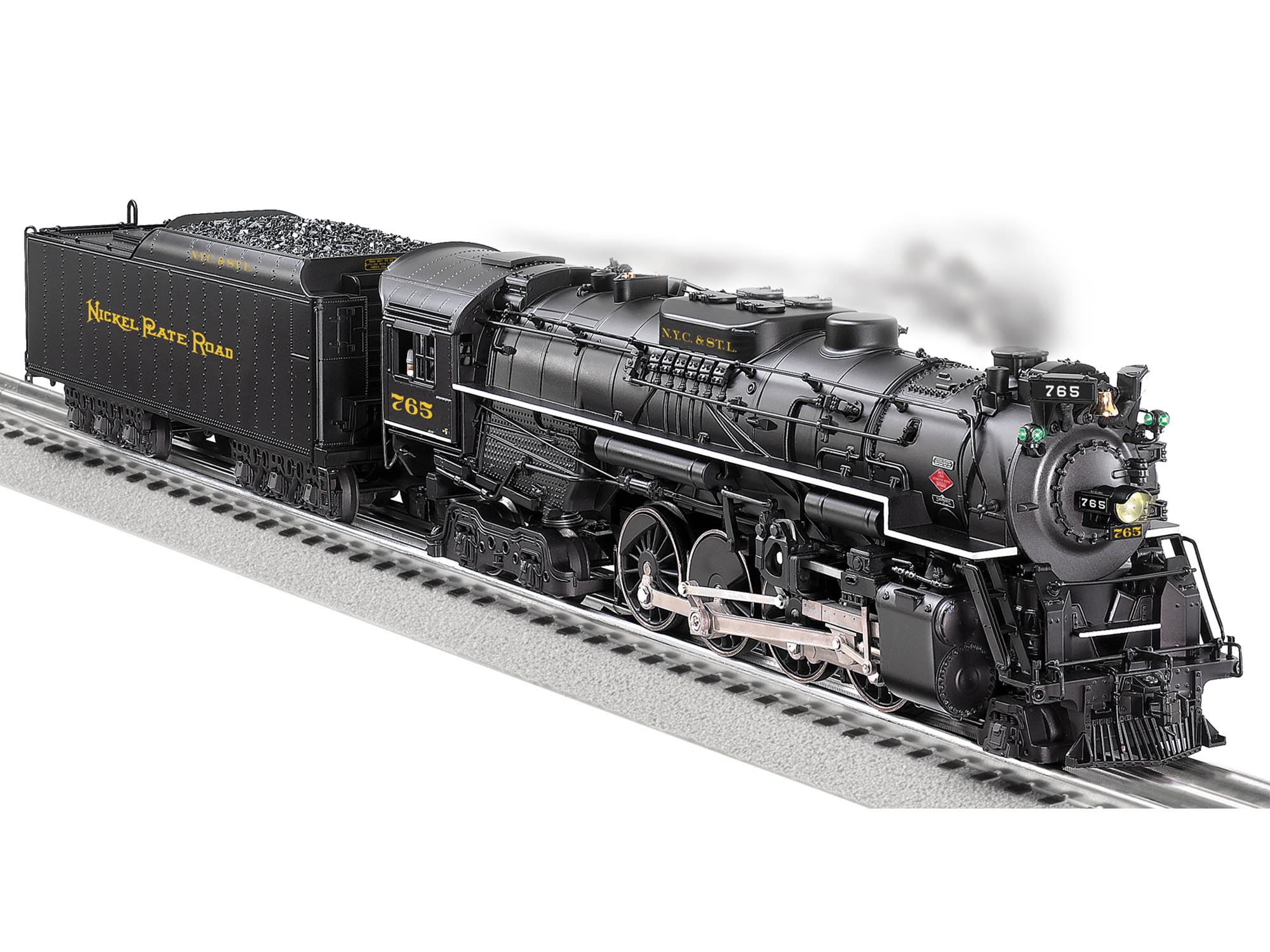
Virginian 508, 6-38077 appeared in the 2004 Volume II catalog and has the correct oval number plate centered on the front of the smoke box and low mounted head light but incorrect domes for a Virginian 2-8-4.

Lionel has offered their AMC Berk as a stand in for an Erie locomotive on two occasions.
Erie 3315, 6-38051 2003 Volume I
Erie 3321, 6-11453 2014 Signature
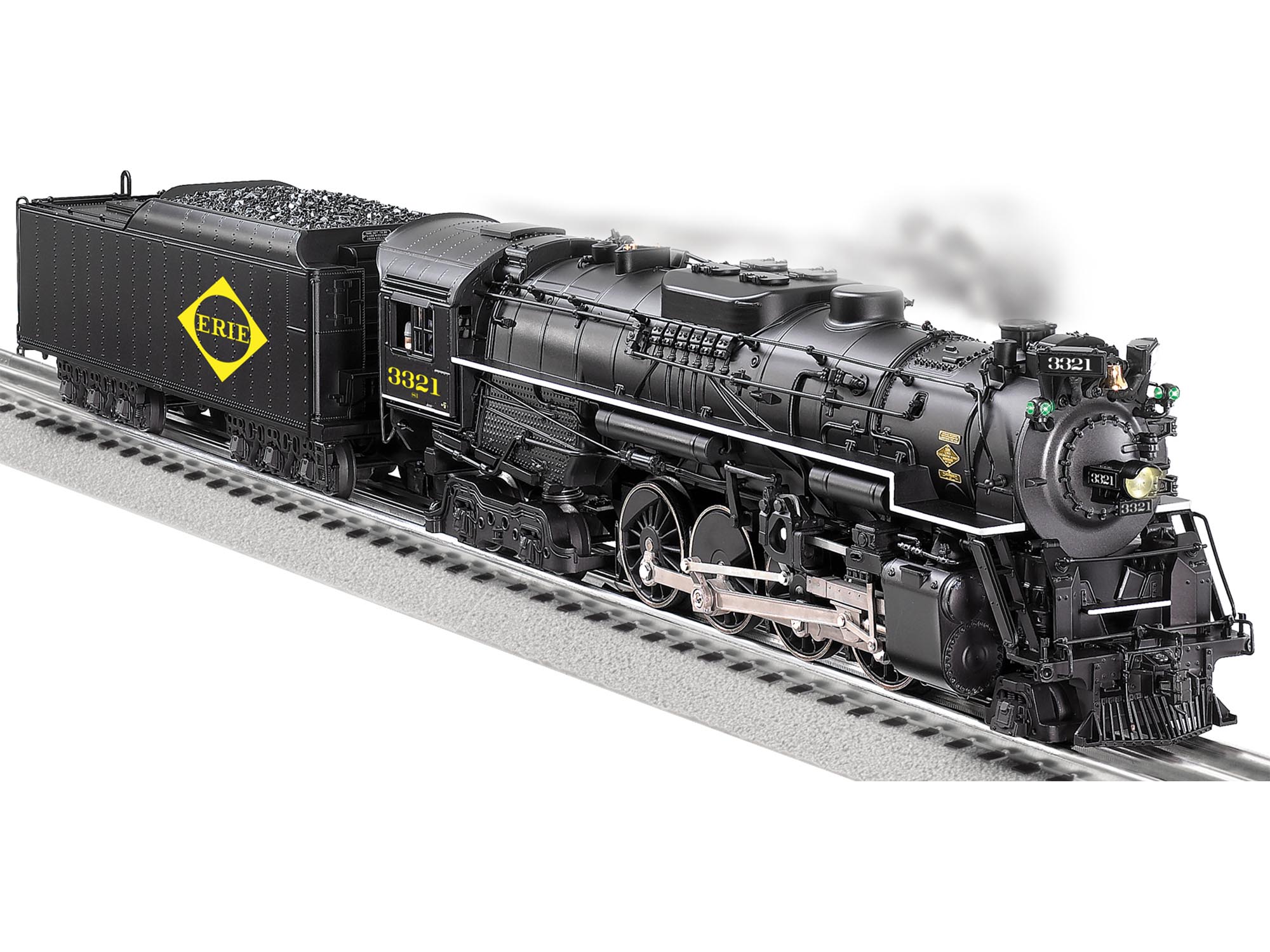
MTH Advisory Mechanical Committee Berkshires
MTH introduced the first diecast O scale Berkshire model in their 1999 Volume II catalog. The earliest were conventional control with Protosound in the 3 rail version. Since then they have been made with Protosound 2 and 3. Both 2 rail and 3 rail versions have been cataloged although the 2 rail models are rare.
The Nickel Plate has been the most popular subject for MTH's AMC Berkshires.
NKP 765 20-3032-1, -2 1999 Volume II
NKP 779 20-3071-1 Uncataloged
NKP 769 20-3291-1 2007 Volume II
NKP 740 20-3566-1/22-3566-2 2015 Volume I
NKP 755 20-3567-1/22-3567-2 2015 Volume I
NKP 765 20-3568-1/22-3568-2 2015 Volume I
NKP 766 20-3569-1 set 2015 Volume I
NKP 750 20-3570-1 set 2015 Volume I

20-3063-1, 2001 Volume III represents NKP 759 as she appeared in 1969 for the Golden Spike Centennial Limited.

Pere Marquette
PM 1225, 20-3066-1 2001 Volume III

The Richmond, Fredericksburg & Potomac bought ten AMC based 2-8-4s from Lima in 1943. Although true to the AMC design they differed from their NKP sisters in details like domes, pilots and compressor mounting. MTH offered their Nickle Plate Berk as RF&P 580 in the 2007 Volume II catalog as 20-3292-1.

MTH has offered their NKP style AMC locomotive as a stand in for a Erie Berkshire as well as the L&N's “Big Emma” EM-1.
Erie 3325, 20-3065-1 2001 Volume III
Erie 3331, 20-3290-1 2007 Volume II

L&N 1974, 20-3064-1 2001 Volume III

MTH also used their NKP Berk as a curious stand in for C&O 2727 dressed up like a real world Reading T-1 decorated in garish 1970s colors for the Chessie Steam Special. The MTH model is as much inspired by the real excursion locomotive as the early 80s Lionel 736 style Berkshire that wore similar decoration.
Chessie 2727, 20-3289-1 2007 Volume II

MTH is the only maker of a correct diecast C&O 2-8-4 Kanawha in O scale. While identical to other AMC 2-8-4s in overall dimensions the C&O locomotives have the sand dome in front of the steam dome, a foot board pilot, shielded air compressors mounted on the pilot deck, a low mounted headlight, oval number plate centered on the smoke box door and a larger tender. MTH tooled up to capture all those details. First offered in 2005 the MTH Kanawha is a must have for fans of C&O steam.
C&O 2705, 20-3186-1 2005 Volume II
C&O 2736, 20-3187-1 2005 Volume II
C&O 2727, 20-3419-1 2010 Volume II
C&O 2716, 20-3420-1 set 2010 Volume II



MTH has also offered their C&O 2-8-4 lettered for the Southern. While the Southern did not have any 2-8-4s in the steam era it did lease C&O 2716 fo steam excursion service and gave modern rail fans a taste of southern fried Berk. MTH has offered Southern 2-8-4s in prototypical black and should have been green. The first fantasy green locomotive was first offered as the 2790, one above the highest numbered real C&O locomotive.
SOU 2716, 20-3188-1 2005 Volume II
SOU 2716, 20-3418-1 2010 Volume II

SOU 2790, 20-3189-1 2005 Volume II
SOU 2775, 20-3417-1 2010 Volume II

P&LE A-2a
The last new 2-8-4 locomotive design was commissioned by the New York Central System's Pittsburgh & Lake Erie and designated the A-2a class. Built by Alco in 1948, this group of seven locomotives was something of a throwback design compared to the AMC Berks and reverted to 63 inch drive wheels. They were the last steam locomotives built by the American Locomotive Company. In fact, only the locomotives were built by Alco since they had already converted their tender shop to other use. The tenders were built under subcontract by Lima and the MTH models sport prototypical diamond shaped Lime builder's plates.
P&LE 9401, 20-3128 appeared in the MTH 2004 Volume I catalog.

Hopefully this thread can grow into a complete reference for those interested in O scale Berkshires. Your comments, corrections or additions are most welcome. Let is know about the details, features and operating characteristics of your Berkshires.
And let's see those O scale Berkshire photos!
For information on other types of locomotives see the O Scale Locomotive Guide.
https://ogrforum.ogaugerr.com/t...ale-locomotive-guide
And for information on scale freight cars see O Scale Freight Car Guide.
https://ogrforum.ogaugerr.com/t...le-freight-car-guide




